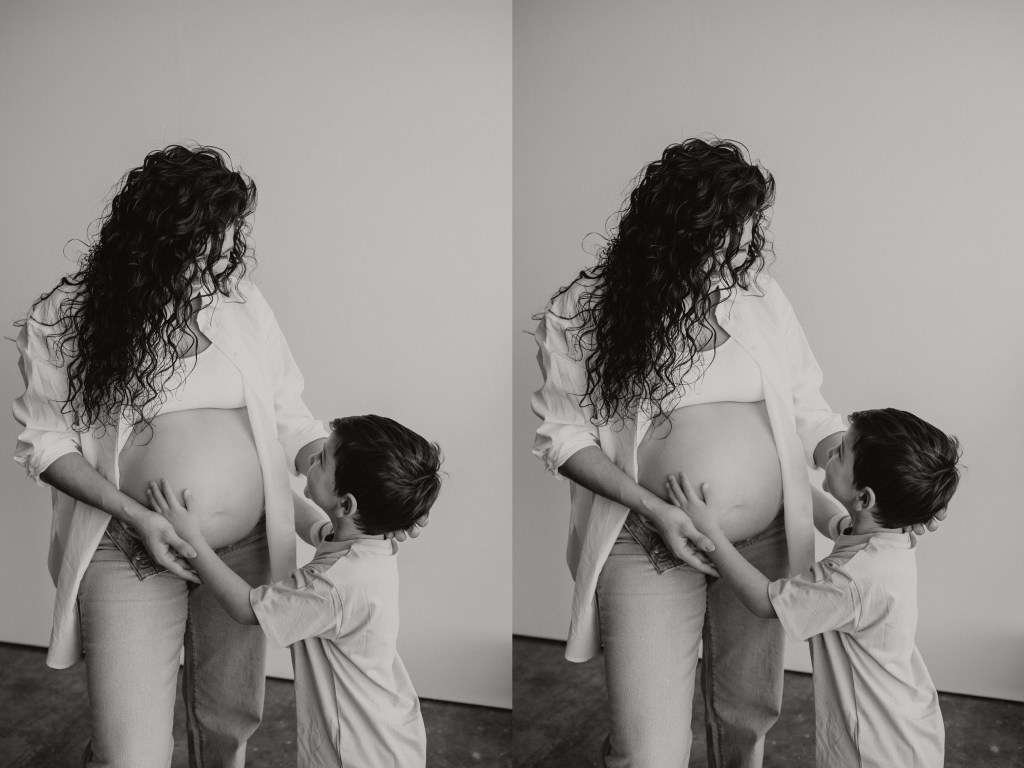In 2023, my sister Victoria spent more than 24 hours hemorrhaging into three diapers when Dallas-area hospitals declined to help her. “I know you’re not supposed to have regrets, but I do,” she said, about supporting Trump. “Look what’s happened.”
My sister Victoria was wrangling Elias, her then-2-year-old, into his costume on Halloween when the spots of blood in her underwear became worrisome. It was almost exactly two years ago, in 2022, and Elias had woken up from a nap excited about trick-or-treating. She’d gotten him into a shiny black firefighter hat, a yellow jacket with neon reflectors, kelly-green shoes, and a bright red hatchet — the color of the blood she could no longer ignore.
“I could feel it. That’s when I started to panic,” she told me last week. It was the first time we had spoken at length since 2018. “I was trying to hide it because it was Halloween, so the only thing I was thinking about was just making sure that I wasn’t spoiling the holiday for Elias.”
Our relationship was non-existent then, strained both by a traumatic childhood and the fractured ways we’d each coped. She was a busy toddler mom. I’d just been nominated for an Emmy. We were doing the best we could, but we butted heads. Meanwhile, people across the country were on edge, wondering what a midterm election would bring in the months after Roe v. Wade was overturned.
Now, with weeks to go before another Halloween — and another presidential election — she was explaining the terror-filled night she’d spent without me, when she faced the consequences of our state’s conservative agenda to outlaw abortion.
“I didn’t want Elias to notice anything was going on,” Victoria remembered. She put on Blippi songs in the car, trying to hide her fear as she drove down the North Central Expressway. She dropped Elias off at our mom’s before going to the hospital.
“It felt like the longest drive I’ve ever taken.”
I still remember the day Victoria was born. I sat patiently on a woven metal bench with thick plastic coating in a cold waiting room at Dallas’ Parkland Hospital. My fingers were tiny enough to poke through the holes as I counted each one, waiting to meet my soon-to-be built-in best friend, my first hermanita. I had practiced holding her like I had done with all my baby dolls. I had big plans to help my mom pick out our matching outfits. At the direction of my dad, her namesake, I prepared to be her protector. I was proud to have such an important role, but it proved heavier than I imagined.
In retrospect, it must’ve been hard to be my younger sister. I was an over-achiever who coped with complex post-traumatic stress disorder by always doing the most and staying busy. I was a good student who sat at the front of the class. I followed the rules. I went to college, graduated, and got my dream job as a TV reporter. I won awards and stacked accolades. Growing up as the eldest daughter in an immigrant household, I was the man on the El Mundo lotería card holding up the world. I couldn’t mess up. Maybe not in so many words, but my parents constantly told my sister to be more like me.
In 2016, I had a panic attack minutes before going on live TV at a campaign rally for then-presidential candidate Donald Trump. He and his supporters repeated more and more racist comments about immigrants and Mexicans. They decried “anchor babies” and said they’d build a wall so high that anyone who dared to climb it would fall to their death, landing in pieces. As the crowd cheered, I thought of my immigrant parents, and the sinking feeling that these verbal attacks were being normalized in mainstream politics only became heavier. Afterwards, I embarked on a healing journey, but it wasn’t perfect or simple.
Meanwhile, Victoria was ready to change things up. She quit her waitressing job, packed all her things, and moved to the mountains of Arkansas. She took a job selling cell phones and started hiking. Living life in a more rogue way. And right around the time I was feeling — in my bones — the danger of Trump’s racism, my sister found herself attracted to the brash New Yorker running for president. She could almost see herself in him — a little rough around the edges, rebellious, unapologetic. “This guy is not a politician! He’s very blunt and upfront about what he’s speaking and what he’s believing in, like maybe that is what
Six years later — after Trump appointed three Supreme Court justices who each voted to overturn Roe v. Wade — my sister sat hemorrhaging for hours in the emergency waiting room in the conservative small town of Waxahachie. “I remember just being in there and seeing these ambulances,” Victoria said. Our mother offered to stay at the ER with my sister. But Victoria wanted her to take her son trick-or-treating. “The only thing I cared about was just making sure Elias got his candy.”She was nearly nine weeks pregnant. The life that was supposed to be growing inside her felt like it was flowing out in streams of blood. It was filling the thick pads she was wearing, and she feared any moment it would seep onto the glossy plastic blue chairs at Baylor Scott & White Medical Center.
I’m bleeding uncontrollably, I can’t stop it, and no one can help me because everyone’s afraid of what will happen.” At least, that’s how it felt during those hours in the waiting room.Just two months earlier, Texas’ trigger law had gone into effect, making abortion a felony punishable by life in prison. Experts warned the law would be a minefield. And it is.In 2023, 20 women filed a lawsuit asking the state to clarify the state’s definition of its “medical emergency” exceptions. But this past May, the Center for Reproductive Rights reported that the Texas Supreme Court refused to clarify, denying the women’s claims. In other states, like in Georgia, women have died “preventable deaths” because doctors’ fears of prosecution have been pitted against the needs of their patients.
As the clock ticked, and Victoria bled, she and her partner Bryan desperately clung to each other’s hands, in shock. She was in desperate need of life-saving care — care that she started to believe she’d voted away her rights to. Time collapsed and expanded. After a few hours, she and her partner were finally called into a back room to check her vitals. Then they were escorted to an emergency room bed.
A doctor came into the room. She was a young woman. Cold. She asked them questions that felt like an interrogation. Then she performed an ultrasound before passing her off to a tech, who asked her to remove her boxer shorts for another, this time transvaginal, ultrasound.“I took them off, and the amount of blood that was on my legs, rushing down… I remember standing there, and I just started crying again,” Victoria said. Her email records from the hospital show both ultrasounds and describe her test results from the Oct. 31, 2022 visit as an “evolving failed pregnancy with heterogeneous blood products again seen in the lower uterine segment. The previously characterized gestational sac in the lower uterine segment is no longer identified. No intrauterine pregnancy identified.”
It felt very morbid,” she said, tears rolling down her cheek. The delay in care, and then the tenor of the questions while sitting exposed in a cloth gown, made her feel numb. “It felt like it was the last stop, and this is where it all ends. There’s no turning around, and there’s no going to a recovery room afterwards.” Nearly eight hours after they arrived, doctors finally determined that she needed medical care to save her life. She’s one of the lucky ones. Texas’ near-total abortion ban has a narrow exception for the life of the pregnant person. And what constitutes life-threatening remains murky. A study by health care consulting firm Manatt Health published this week found almost a third of OB-GYNs in Texas don’t have a clear understanding of the law, and 60% fear legal repercussions. Data released by the Gender Equity Policy Institute showed that since the abortion ban in 2021, the state’s rate of maternal mortality cases rose by 56%.
After that, they cleaned (me) up, they brought me the pill, and they let me stay there for a while,” Victoria said. The pill, mifepristone, is used for abortion and miscarriage care. It helps by softening the cervix and breaking down the lining of the uterus. (Texas tried to ban that medication as well, but this past June, the U.S. Supreme Court rejected the state’s challenges
Eventually they brought in the discharge papers, and everything was done.” The child would’ve been her second. They had settled on naming the baby Leonardo if it was a boy — Mila if it was a girl. The two held a small ceremony in Bryan’s backyard and buried her sonogram, along with a rattle his mother had made for them. ***After her miscarriage that fall, Victoria and her partner spent winter in grief. But soon, spring brought the promise of new life. She was pregnant again.“You can schedule blood work to find out the gender, and I had made that appointment, and I was very excited,” Victoria recalled. This time, she said, her intuition made her sure it was a girl.



